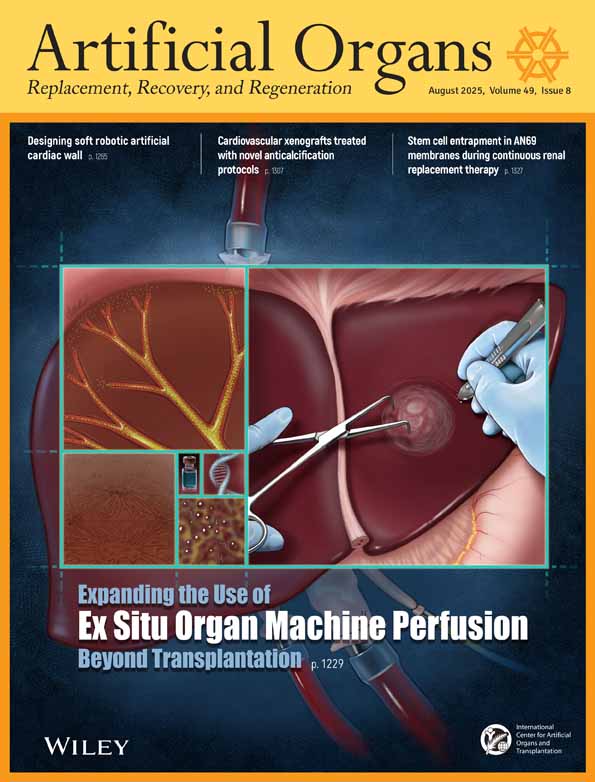Flow Balance Between the Left and Right Cardiac Output of an Eccentric Roller Type Total Artificial Heart
Presented in part at the 6th Congress of the International Society for Rotary Blood Pumps, July 25–27, 1998, in Park City, Utah, U.S.A.
Abstract
We have made an eccentric roller type total artificial heart (ERTAH). The ERTAH is a positive-displacement device comparable to a DeBakey roller pump. Its left and right outputs are determined by the size of its blood chambers, and the ratio of its left and right output is almost constant. We focused on an interatrial shunt to achieve left-right balance. We have conducted numerical simulation, a mock test, and an acute animal experiment to analyze left-right heart balance during ERTAH operation. Numerical simulation was performed under conditions in which the flow of the left artificial heart was fixed at 6 L/min, the flow of the right artificial heart was varied from 4.8 to 6 L/min, and the interatrial resistance was also varied. The relationship between the interatrial shunt flow rate and the output of the left and right artificial hearts was balanced when the flow of the right artificial heart was at 5.45 L/min. In a mock test, 2 DeBakey roller pumps were connected to the left and right sides of a Donovan mock circulatory system, and an interatrial shunt was created between the inlet ports of the left and right roller pumps. The interatrial resistance of the mock system was varied from 7.7, to 4.3, and to 2.9 mm Hg·min/L when the inner diameter of the interatrial shunt was 6, 8, and 10 mm, respectively. As in the mock test, 2 roller pumps were used to bypass the right and left hearts of a goat weighing 60 kg. The flow rate of the left heart was almost constant (4.7 L/min). The flow of the right heart was approximately 4.1 L/min when the interatrial shunt flow rate was zero. A leading consideration was that the left to left shunt through the bronchial arteries in this goat was approximately 0.6 L/min. In developing the ERTAH, we considered that creating an interatrial shunt between the inlet ports of the ERTAH as well as making a difference between the chamber volumes might be effective in balancing the left-right sides of the artificial heart.




